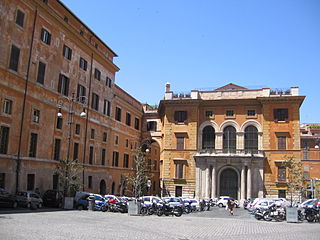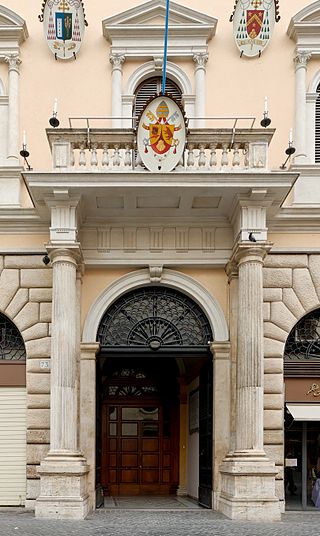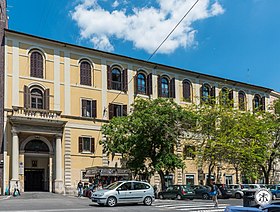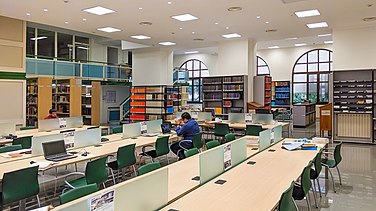
The Eastern Catholic Churches or Oriental Catholic Churches, also called the Eastern-Rite Catholic Churches, Eastern Rite Catholicism, or simply the Eastern Churches, are 23 Eastern Christian autonomous particular churches of the Catholic Church, in full communion with the Pope in Rome. Although they are distinct theologically, liturgically, and historically from the Latin Church, they are all in full communion with it and with each other. Eastern Catholics are a distinct minority within the Catholic Church; of the 1.3 billion Catholics in communion with the Pope, approximately 18 million are members of the eastern churches.

The Syro-Malankara Catholic Church, also known as the Malankara Syrian Catholic Church, is an Eastern Catholic sui iuris particular church in full communion with the worldwide Catholic Church possessing self-governance under the Code of Canons of the Eastern Churches. It is one of the major archiepiscopal churches of the Catholic Church. It is headed by Major Archbishop Baselios Cardinal Cleemis Catholicos of the Major Archdiocese of Trivandrum based in Kerala, India. With more than 1096 parishes, its one of India's biggest church evangelical establishments.
The hierarchy of the Catholic Church consists of its bishops, priests, and deacons. In the ecclesiological sense of the term, "hierarchy" strictly means the "holy ordering" of the church, the Body of Christ, so to respect the diversity of gifts and ministries necessary for genuine unity.

Ignatius Basile Moses I Daoud was Patriarch of Antioch for the Syrian Catholic Church, a Cardinal Bishop, and Prefect of the Congregation for the Oriental Churches in the Catholic Church.

The Dicastery for the Eastern Churches, previously named Congregation for the Oriental Churches or Congregation for the Eastern Churches, is a dicastery of the Roman Curia responsible for contact with the Eastern Catholic churches for the sake of assisting their development and protecting their rights. It also maintains whole and entire in the one Catholic Church the heritage and canon law of the various Eastern Catholic traditions. It has exclusive authority over the following regions: Egypt and the Sinai Peninsula, Eritrea and northern Ethiopia, southern Albania and Bulgaria, Cyprus, Greece, Iran, Iraq, Lebanon, Israel, Syria, Jordan and Turkey, and also oversees jurisdictions based in Romania, Southern Italy, Hungary, India and Ukraine.

In the Eastern Catholic Churches, major archbishop is a title for the chief hierarch of an autonomous particular Church that has not been "endowed with the patriarchal title". Major archbishops generally have the same rights, privileges, and jurisdiction as Eastern Catholic patriarchs, except where expressly provided otherwise, and rank immediately after them in precedence of honor.

The Pontifical Biblical Institute is a research and postgraduate teaching institution specialised in biblical and ancient Near Eastern studies. It is an institution of the Holy See entrusted to the Society of Jesus (Jesuits).
Mar Antony Padiyara was a Syro Malabar Major Archbishop and cardinal. He was the First Major Archbishop of the Syro-Malabar Catholic Church. He was Major Archbishop of Ernakulam-Angamaly from 1985 to 1996, having previously served as Bishop of Ootacamund (1955–1970) and Archbishop of Changanassery (1970–1985). He was elevated to the cardinalate in 1988.

The Pontifical Urban University, also called the Urbaniana after its names in both Latin and Italian, is a pontifical university under the authority of the Congregation for the Evangelization of Peoples. The university's mission is to train priests, religious brothers and sisters, and lay people for service as missionaries. Its campus is located on the Janiculum Hill in Rome, on extraterritorial property of the Holy See.
Gabriel Acacius Coussa, BA was a Syrian Melkite Catholic archbishop, expert in canon law and cardinal. He served as secretary of the Congregation for the Eastern Churches and was the first Eastern Catholic to hold this position.

Luigi Sincero was a Roman Catholic Cardinal and President of the Pontifical Commission for the Authentic Interpretation of the Code of Canon Law and Secretary of Sacred Congregation for the Oriental Churches, the title of Prefect held by the Popes from 1917 until 1967.

Filippo Camassei was an Italian cardinal of the Roman Catholic Church who served as Latin Patriarch of Jerusalem from 1906 to 1919. He was elevated to the rank of cardinal in 1919.

Ivan Žužek, was a Slovenian Jesuit priest and Canonist. He was the General Secretary of Pontifical Commission for the Revision of Eastern Code (CCEO).

Dimitrios (Dimitri) Salachas was the apostolic exarch of the Greek Byzantine Catholic Church.

The Roman Colleges, also referred to as the Pontifical Colleges in Rome, are institutions established and maintained in Rome for the education of future ecclesiastics of the Catholic Church. Traditionally many were for students of a particular nationality. The colleges are halls of residence in which the students follow the usual seminary exercises of piety, study in private, and review the subjects treated in class. In some colleges there are special courses of instruction but the regular courses in philosophy and theology are given in a few large central institutions, such as Pontifical Urbaniana University, the Pontifical Gregorian University, the Pontifical Lateran University, and the Pontifical University of Saint Thomas Aquinas, Angelicum.

John Denver Faris is an American Chorbishop of the Syriac Maronite Church of Antioch, serving the Maronite Catholic Eparchy of Saint Maron of Brooklyn, headquartered in Brooklyn, New York. He is a canon lawyer of the Eastern Catholic Church, and an expert called upon for dialogue between the Catholic Church and the Eastern Christian Churches.
Precedence signifies the right to enjoy a prerogative of honor before other persons; for example, to have the most distinguished place in a procession, a ceremony, or an assembly, to have the right to express an opinion, cast a vote, or append a signature before others, to perform the most honorable offices.

Shimun VIII Yohannan Sulaqa was the first Patriarch of what was to become the Shemʿon line of Chaldean Catholic Church, from 1553 to 1555, after it absorbed this Church of the East patriarchate into full communion with the Holy See and the Catholic Church.

Cyril Vasiľ S.J. is a Slovak Jesuit who has been eparch (bishop) of the Eparchy of Košice in the Slovak Greek Catholic Church since June 2021, after serving as apostolic administrator there for 16 months. He continues to enjoy the personal title of archbishop. He held leadership positions at the Pontifical Oriental Institute from 2002 to 2008. He was made a titular archbishop in 2009 and held that title while serving as secretary of the Congregation for the Oriental Churches from 2009 to 2020 and while apostolic administrator of Košice.
The Anselmianum, also known as the Pontifical Athenaeum of Saint Anselm is a pontifical university in Rome associated with the Benedictines. It offers courses in philosophy, theology, liturgy, monastic studies, languages, sacramental theology, and the history of theology.




























